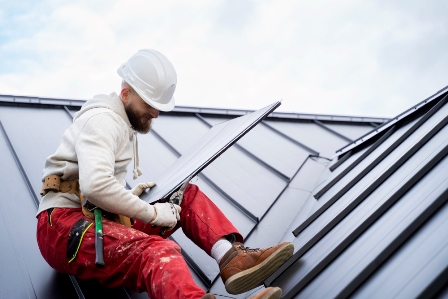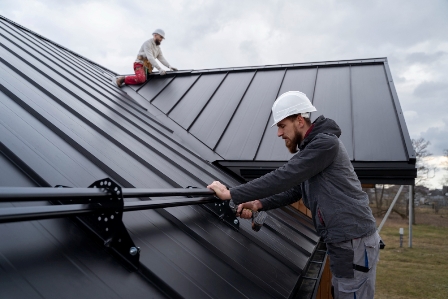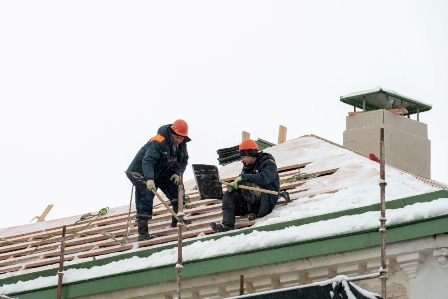Winter is just around the corner, and as the temperature drops, it’s crucial to ensure that your roof is well-prepared to withstand the challenges that the season brings. A winter-ready roof not only protects your home from the elements but also ensures a cozy and energy-efficient living space. In this article, we’ll guide you through a comprehensive roofing checklist to make sure your roof is up to the task.
Winter can be tough on roofs, with snow, ice, and freezing temperatures putting them to the test. As responsible homeowners, preparing your roof for winter should be at the top of your to-do list. Let’s delve into the essential steps to ensure your roof is ready to face the winter months head-on.
Inspecting Shingles
The first line of defense for your roof is its shingles. Inspect them for any signs of damage or missing pieces. Addressing shingle issues now can prevent more significant problems during winter storms.
Gutter Maintenance
Clearing debris from gutters is crucial to ensure proper drainage. This helps prevent ice dams, which can lead to water damage and leaks. Make sure your gutters are free from leaves, branches, and other obstructions.
Attic Inspection
A well-maintained attic contributes to a healthy roof. Check insulation and ventilation to prevent heat loss, which can contribute to ice dams. Addressing these issues now will keep your home warmer and your energy bills lower.
Chimney and Flashing
Inspect your chimney for any damage and ensure flashing is securely installed. A stable chimney and flashing prevent water infiltration, protecting your home’s interior from potential leaks.
Sealing Leaks
Identify and seal any potential leaks. Water infiltration can cause significant damage, especially during winter when freezing temperatures can exacerbate the problem. A proactive approach now can save you from costly repairs later.
Snow Removal Equipment
Be prepared for snow accumulation on your roof by having the necessary tools for safe removal. Clearing snow promptly helps prevent excess weight and potential structural issues.
Tree Limb Inspection
Assess nearby trees for overhanging limbs that could pose a threat to your roof during winter storms. Trim branches to prevent damage and ensure a safer environment.
Roofing Material Check
Evaluate the condition of your roofing material. If you notice any wear and tear, consider repairs or replacements before winter sets in. A well-maintained roof lasts longer and performs better.
Ice Dam Prevention
Understand the causes of ice dams and implement preventive measures. Proper insulation and ventilation are key factors in preventing ice dams and maintaining a stable roof.
Winter Roof Insulation
Ensure your roof is adequately insulated for winter. Proper insulation not only keeps your home warmer but also contributes to energy efficiency. Check and enhance insulation where needed. You can reach out to insulation professionals to learn more ways on how to insulate your home.
Professional Roof Inspection
Consider hiring a professional roofer for a thorough inspection. Professionals can identify issues that may go unnoticed and provide expert advice on necessary repairs or maintenance.
DIY Repairs
There are simple repairs homeowners can undertake to maintain their roofs. From fixing minor leaks to replacing damaged shingles, a proactive DIY approach can contribute to a healthier roof.
Emergency Preparedness
Create an emergency plan for winter roof issues. Know how to contact professionals promptly in case of emergencies. Quick action can prevent further damage and protect your home.
FAQs
It’s recommended to inspect your roof at least twice a year, preferably before winter and after severe weather events.
While it’s possible, it’s crucial to use proper tools and follow safety guidelines. If in doubt, consider hiring professionals.
Look for water stains on ceilings, peeling paint, or warped wood. Any unusual spots on your walls or ceiling may indicate a leak.
Ensure vents are clear of obstructions, and consider adding roof vents to improve airflow.
Professionals can identify hidden issues, provide expert advice, and ensure all aspects of your roof are thoroughly inspected.
Conclusion
A winter-ready roof is essential for a cozy and secure home during the colder months. By following this comprehensive checklist, you can address potential issues, prevent damage, and ensure your roof stands strong against winter’s challenges.






